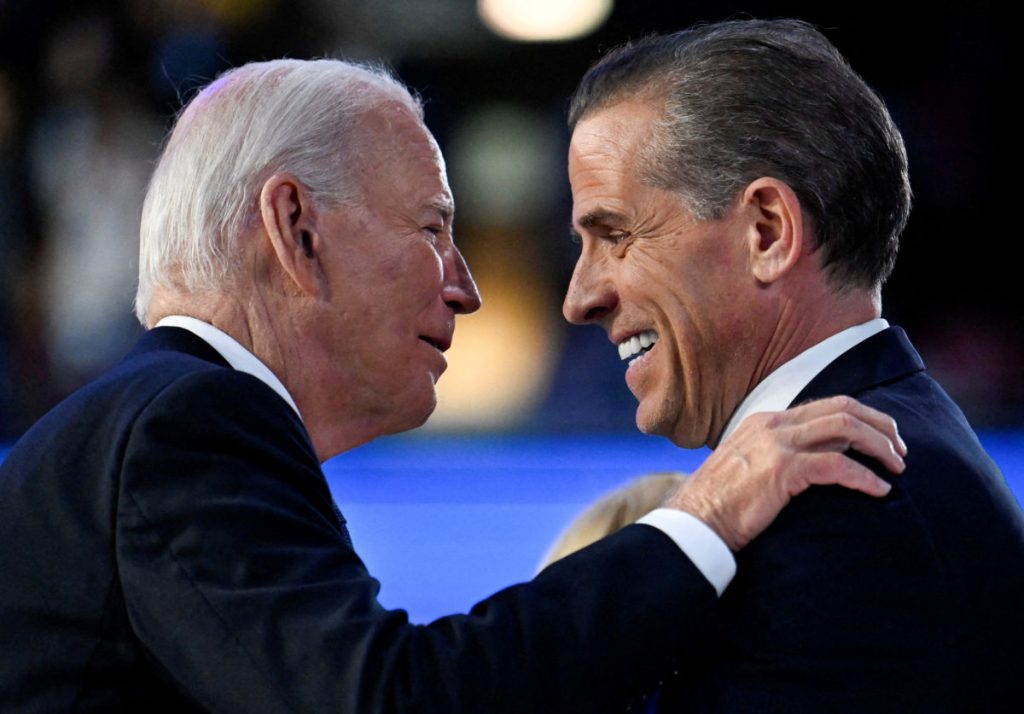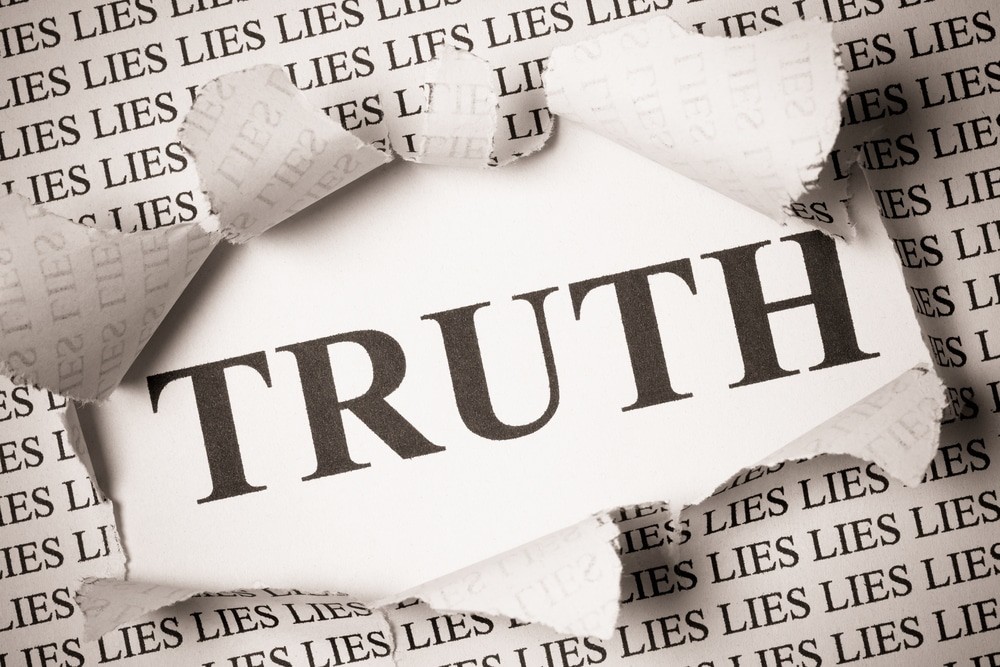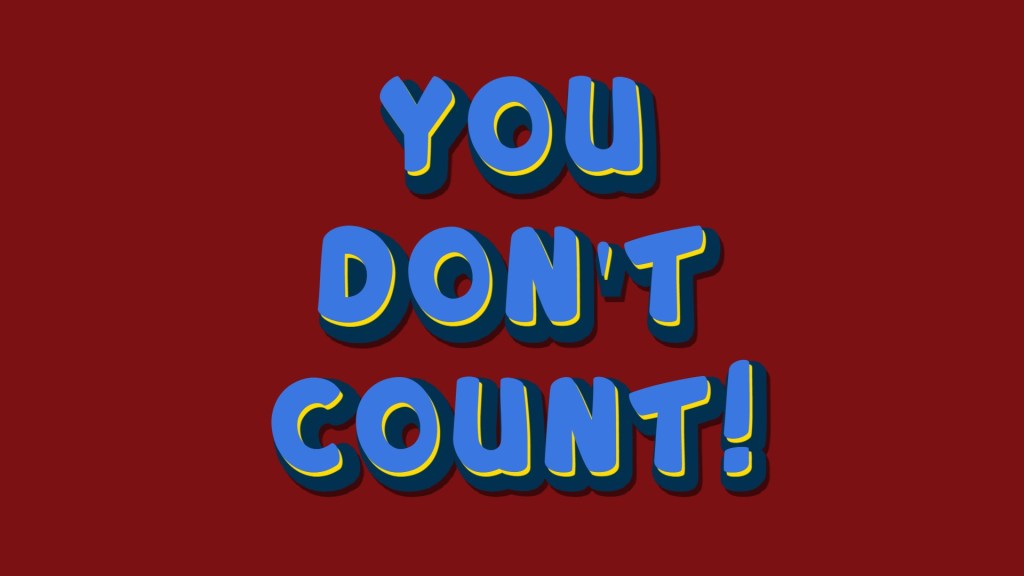
It is not a secret that I do not like Donald Trump as a person and I do not think that he is fit to be the President of the United States. That was true when he ran in 2016, when he ran in 2020 and when he sort-of ran in 2024 (I say sort-of since he declined to participate in the GOP debates and the Republican party did not require him to do so). And, since 2016, I have used my Facebook account to point out the concerns that I have with Mr. Trump, including his actions in office.
But suddenly, in the past month, I have had three individuals–all trusted brothers in Christ–approach me to express concern over my posts about Mr. Trump. I appreciate that they were willing to approach me; far too often we believers—especially, I dare say, Christian men—shy away from difficult, iron-sharpening-iron conversations. All three me approached me in the right way, following biblical principles, and all three, I believe, had an appropriate motive. To my knowledge, none of them knew anything about the other talking with me.
I will be the first to admit that if three Christian friends approach you about the same thing, it would be wise to listen. And I did listen. I don’t think I became defensive. I said that I would think and pray about what they had to say, and I have done that. But I should add that within the same time period I received, unsolicited, feedback from two or three people thanking me for taking a stand. I then solicited feedback from three other friends–people I have known for a long time, whose opinions I respect and whom I believe would tell me if they thought I was in the wrong–whether they thought I was out of line or risking offense with my posts. I have reached three conclusions as a result of those conversations and my prayerful reflection on them and I feel it is appropriate to share them here.
First, I care about politics and I like to argue. Debate would sound more polite, but argue may be more accurate. I have followed presidential politics since 1988. My undergraduate degree is in political science. I thought, for a long time, that I would be serving in an elected office or working for an elected official. God showed me that, thus far anyway, that has not been His plan for my life. But I am still interested in politics, I still like to argue and I definitely still have opinions. So maybe I have posted about Mr. Trump more than I should. I will continue to prayerfully evaluate that.
Second, the concern that was expressed, and all of the feedback and pushback that I have received about my posts and comments about Mr. Trump have come from other believers. And I cannot help but wonder why. None of the men who approached me suggested that I have posted anything that was factually wrong or biblically inaccurate. So why are the posts potentially offensive?
Strangely, some people who have taken issues with my posts have pointed out that God appoints leaders to accomplish his purposes on earth. There are two things to consider in regard to that. First, if you believe that, then you have to believe that God also appointed Joe Biden for office and that He had a purpose for having Biden in office for four years. You have to believe that about every office holder in the country. You don’t get to claim God is in charge only when things are going your way; God is in charge all of the time. The vast majority of the people who are now questioning my posts about Mr. Trump are the same people who repeatedly claimed that the 2020 election was stolen, said of Biden that he’s “Not my President!” and proudly wore shirts and flew flags proclaiming “Let’s Go Brandon!” But God put Trump in office for “such a time as this,” they say! Okay. Did he also put Biden in office for such a time as that? And Obama? And Bush? And Warren Harding? You can’t have it both ways.
Second, that argument is, I assume, based on Romans 13. That passage deals with being subject to rulers—including the often-overlooked instruction to pay taxes to whom taxes are due. But it begins with this verse: “Let every person be subject to the governing authorities. For there is no authority except from God, and those that exist have been instituted by God.” The verse says that governing authorities are instituted by God. But who is the governing authority in the United States? It is “we the people.” God, in His sovereignty, has given the citizens of the United States of America the ability to choose our own leaders. That does not mean that God chooses who our leaders will be. He allows them to be in office, because nothing happens that He does not allow, but there is a significant difference between what God allows and what God ordains. Check out 1 Samuel 8. The people of Israel wanted a king. God warned them of the results, but He also let them have what they wanted. The fact that Donald Trump is the President of the United States means that God has allowed Him to be; it does not mean that God ordained Him to be or put Him in that place.
Also interestingly, those questioning my posts repeatedly disregard Mr. Trump’s actions on January 6, 2021, and suggest that he did nothing wrong. It was all a peaceful protest or it was all manipulated or it was all faked. It was none of those things. I, and many, many others, watched it live. The testimonies of many who were there tell us what happened. People died. People were seriously injured. It was an incredibly sad day for America. Yet, they keep trying to claim that the J6 Committee destroyed evidence, which is a sure sign that they faked it all. Except that when I ask, as I have done repeatedly, for any evidence at all that the evidence was destroyed I get…crickets. That’s because there is no truth to that claim. (You can find far more evidence than you probably have time to read on GovInfo.gov—all there for you to look at it whenever you would like).
But what about the assassination attempts? Is God responsible for the fact that Donald Trump is still alive? Of course He is. He is responsible for the fact that I am still alive, and you are still alive and every person who is currently alive is still alive. That’s what it means for Him to be the almighty, sovereign God of the universe. It is not proof positive that God ordained Trump to be the president right now.
As I said, I have been following presidential politics since 1988. Since I have been old enough to vote, my preferred candidate in the primary election has only won the White House once, and that was in 2004 when George W. Bush was reelected. But I have prayed for every one of those presidents. I have prayed for wisdom and discernment and protection. And, when I felt it necessary, I have criticized the actions of every one of those presidents. Therein lies the rub…
The fact that I criticize some of what Donald Trump does, or how he does it, does not mean that I disagree with him on everything. When it comes to substance, I agree with him on more than I disagree with him. But he is not a nice man. He is not a good role model for young people. He does not have habits or leadership skills that anyone would tolerate in almost any other setting. He is arrogant. He is vindictive. He is petty. And he seems to have either forgotten, or not to care, that he is not a dictator and he cannot rule with the squiggle of his Sharpie. I think birthright citizenship for children of illegal immigrants should be reconsidered. I think the Department of Education should be eliminated. But he can’t do that on his own. He has to go about it the right way. This is a republic. We have rules and laws that must be followed. When he does admirable things the right way, I will probably comment on that. But when he does admirable things the wrong way, or things which are not admirable, I will definitely comment on that. Not because I am better than he is or because I enjoy it, but because I cannot sit idly by while so many people who profess to be followers of Christ blindly embrace his every move and follow in lock step his plan to Make America Great Again. I want America to be great, but that’s not what the Lord has called His children to pursue.
So, if you’re a follower of Christ, and my posts offend you, why is that? I am asking sincerely. I would honestly like to know. Are you really concerned about my relationship with the Lord—or are you bothered by the fact that I am not as gung ho about Donald Trump as you are? If it’s the latter, so what? I probably don’t cheer for the same sports team(s) you do either, or watch the same TV shows or prefer the same music. What difference does that make? But if it’s the former, that’s a real cause for concern—unless you’re equating the two. And I’m not being dramatic. I am aware of a church that has informed its congregants that if they do not support Donald Trump, they need to leave the church. That’s heresy. That’s idolatry. That’s elevating Donald Trump to a position of being more important than fidelity to the Word of God. And that cannot be ignored. The Bereans were commended for testing what Paul taught. We are exhorted to do that in our churches. We need to do it in the political sphere, too. Just because Trump says it or posts it on Truth doesn’t mean it’s true. Do some research. Don’t live in an echo chamber. Read, watch and listen widely—even, sometimes, to people you’re sure you disagree with. Be mature enough to admit that Trump makes mistakes and has flaws.
And please, keep in mind that when I post about Trump, I don’t mean it as a personal attack on you.
The third conclusion I have reached is that populism is so dangerous. It is not coincidental that Mr. Trump has a portrait of Andrew Jackson hanging in the Oval Office. It was during Jackson’s presidency that the worst domestic riot at the White House ever occurred—celebrating his election to the White House—and it was during Trump’s first term that the worst domestic riot at the Capitol ever occurred, trying to prevent his loss to Joe Biden from being certified by Congress. At least Jackson had lawfully invited “the public” to the President’s House, but the resulting fiasco resulted in such a mess that it took a week to clean it up. I have never seen—and in my study of history I am not aware of—a U.S. president who has gained such a cult-like following as Donald Trump. Sure, for decades now people have used pins, bumper stickers, t-shirts and signs to demonstrate their support for a political candidate and to encourage others to vote for that candidate. But those things generally disappear after an election other than in museums and in the hands of collectors. Not with Trump, though. People continued to wear MAGA hats and fly Trump flags for the duration of the Biden presidency. Entire MAGA stores sprung up. And Trump has capitalized on the blind loyalty of his followers, making money selling everything from Trump-branded shoes to Bibles to silver coins to cryptocurrency—and that’s not an exhaustive list.
Andrew Jackson would not, historically, be considered a populist, since most historians date the emergence of populism to the end of the 19th century. But the explanation of populism provided by Brittanica fits Mr. Trump to a t.
In its contemporary understanding, however, populism is most often associated with an authoritarian form of politics. Populist politics, following this definition, revolve around charismatic leaders who appeal to and claim to embody the will of the people in order to consolidate their own power. In this personalized form of politics, political parties lose their importance, and elections serve to confirm the leader’s authority rather than reflect the different allegiances of the people. Some forms of authoritarian populism have been characterized by extreme nationalism, racism, conspiracy mongering, and scapegoating of marginalized groups, each of which served to consolidate the leader’s power, to distract public attention from the leader’s failures, or to conceal from the people the nature of the leader’s rule or the real causes of economic or social problems.
Donald Trump’s supporters are no longer about the Republican party—they are about Donald Trump. He claims he has a mandate from the people to enact the sweeping changes he is instigating though his electoral victory was actually quite thin. While he did win a clear electoral vote, he won a bit less than half of the popular vote, making him the first minority president since…oh, Donald Trump, in 2016. When he was elected in 2016, Trump received a smaller percentage of the popular vote than any president since George Bush in 2000. But Trump is all about nationalism, scapegoating and conspiracy mongering. Watch out of you get out of step with him, even if you used to be his buddy. Just ask Nikki Haley, Mark Milley, Christopher Wray and a host of others. He seems to think he’s still starring on The Apprentice, firing people left and right, including the Archivist of the United States.
Since taking office three weeks ago, Trump has issued 59 executive orders. That’s more than any president has averaged per year since Jimmy Carter was in office. Executive Orders were designed to be rare. The first ten U.S. presidents didn’t issue as many combined as Trump has issued already. Not until Andrew Johnson did any single president issue more than Trump has in the past three weeks—and he was definitely serving during uniquely challenging circumstances. Not even Abraham Lincoln, who was widely criticized for expanding the power of the executive branch, possibly illegally, issued as many executive orders in his four-plus years in office as Trump has in the past three weeks—and Lincoln was literally trying to save the Union. No single president averaged as many executive orders per year as Trump has issued in three weeks until Theodore Roosevelt—who was president, interestingly, at the height of populism. Executive orders became a popular means of presidential influence through his cousin Franklin’s three-plus terms in office (he averaged 307 per year) but since then have declined sharply. In fact, Trump has already exceeded in number his own per-year average from his first term.
People have become so angry about the state of affairs in Washington, D.C.—and, in many cases, rightly so—that they don’t care what Trump does to “drain the swamp.” But doing the right thing the wrong way is still wrong. This is the United States of America, not some banana republic. Do you remember the Pledge of Allegiance? It says, “…and to the republic, for which it stands….” The power here resides with the people, not with the president, regardless of who he is.
We’re about to see if the courts will slow Trump’s abuse of power—or if he will even care if they try. If they don’t, or he doesn’t, we the people better care. We better take action—legal action, through our elected representatives—to bring him to heel. Throughout history, no story beginning with someone claiming that they are accumulating power for the good of the country has ended well, and it won’t this time, either.
Image credit: John Scott Comedy.








